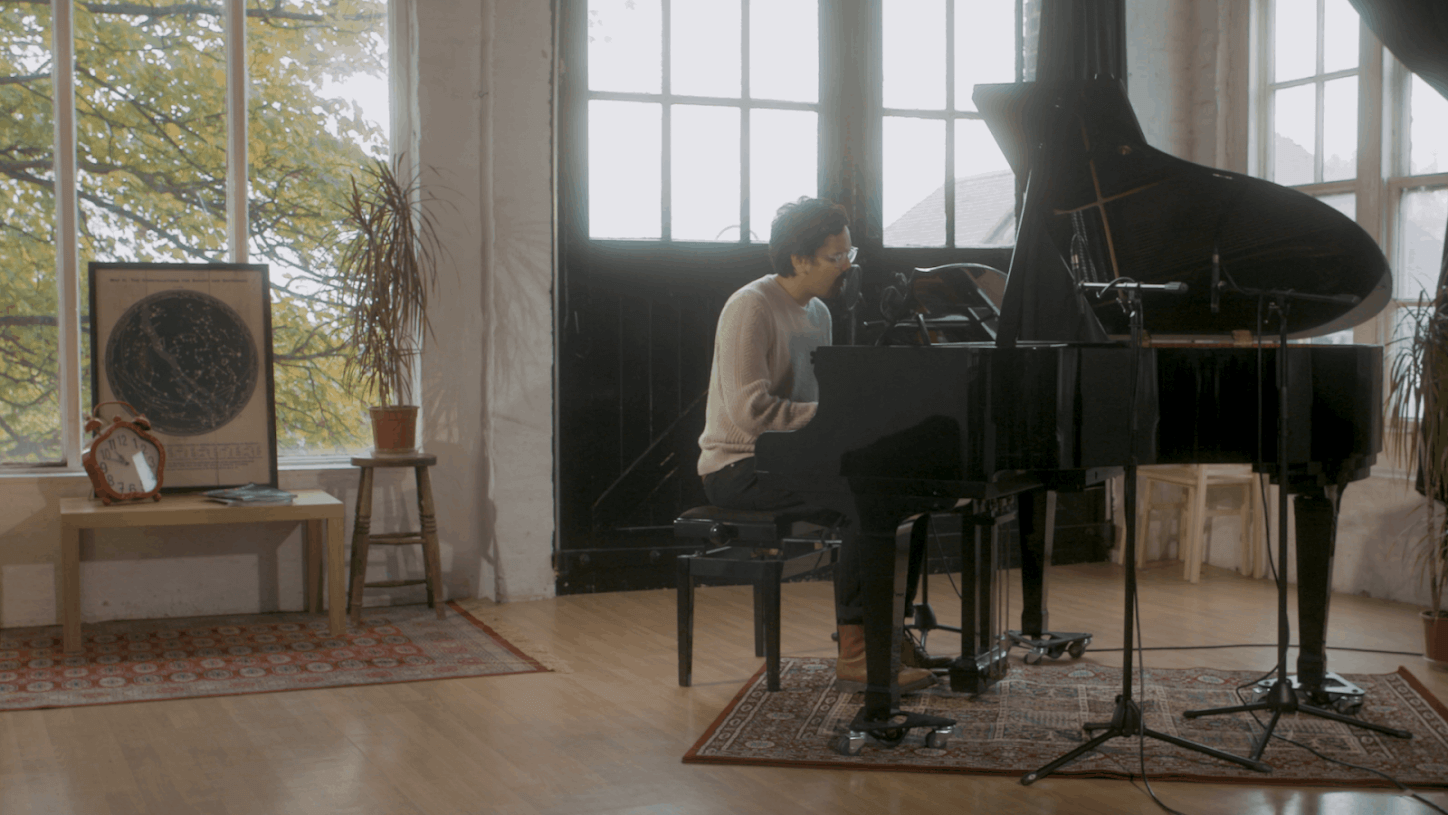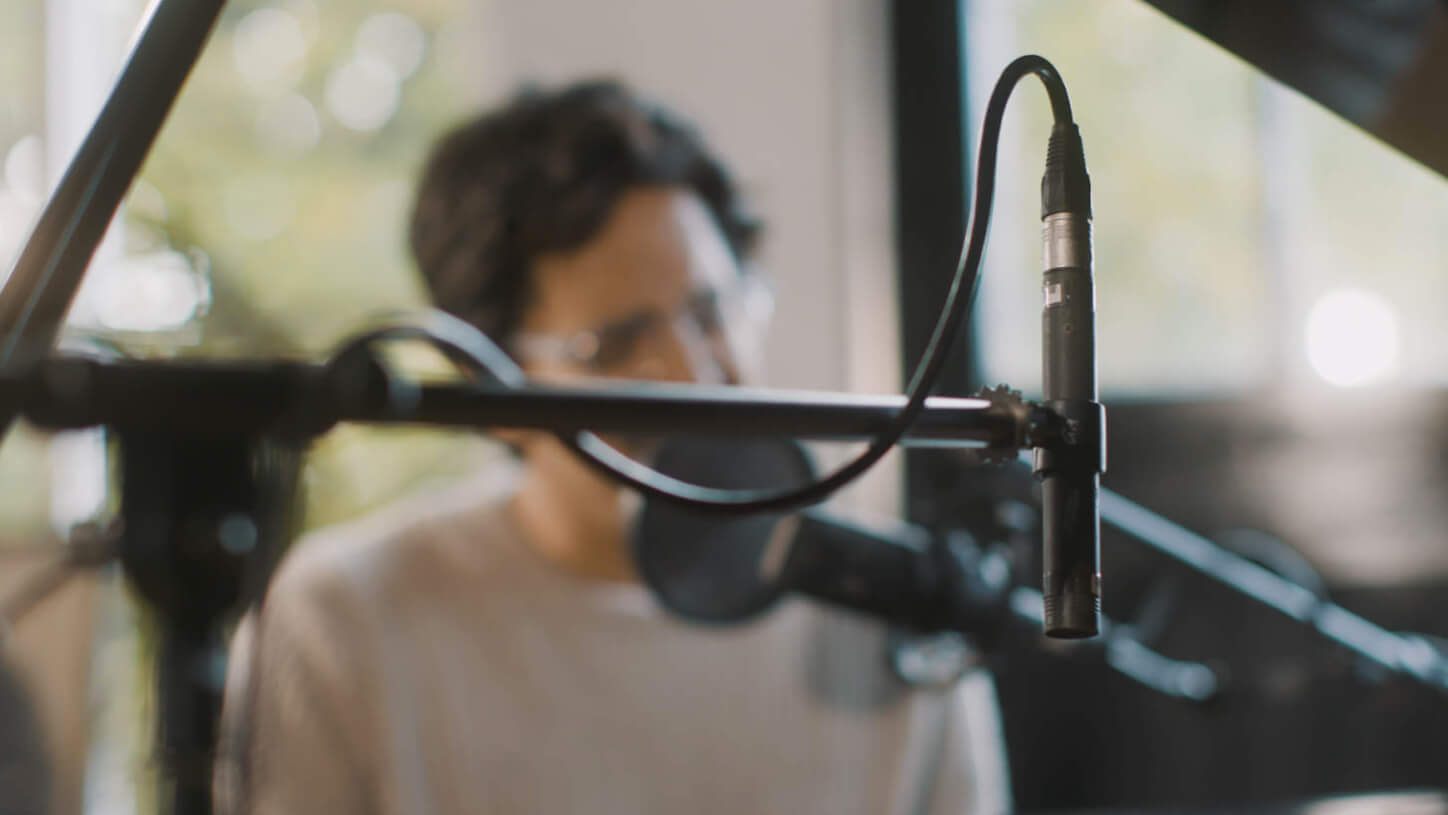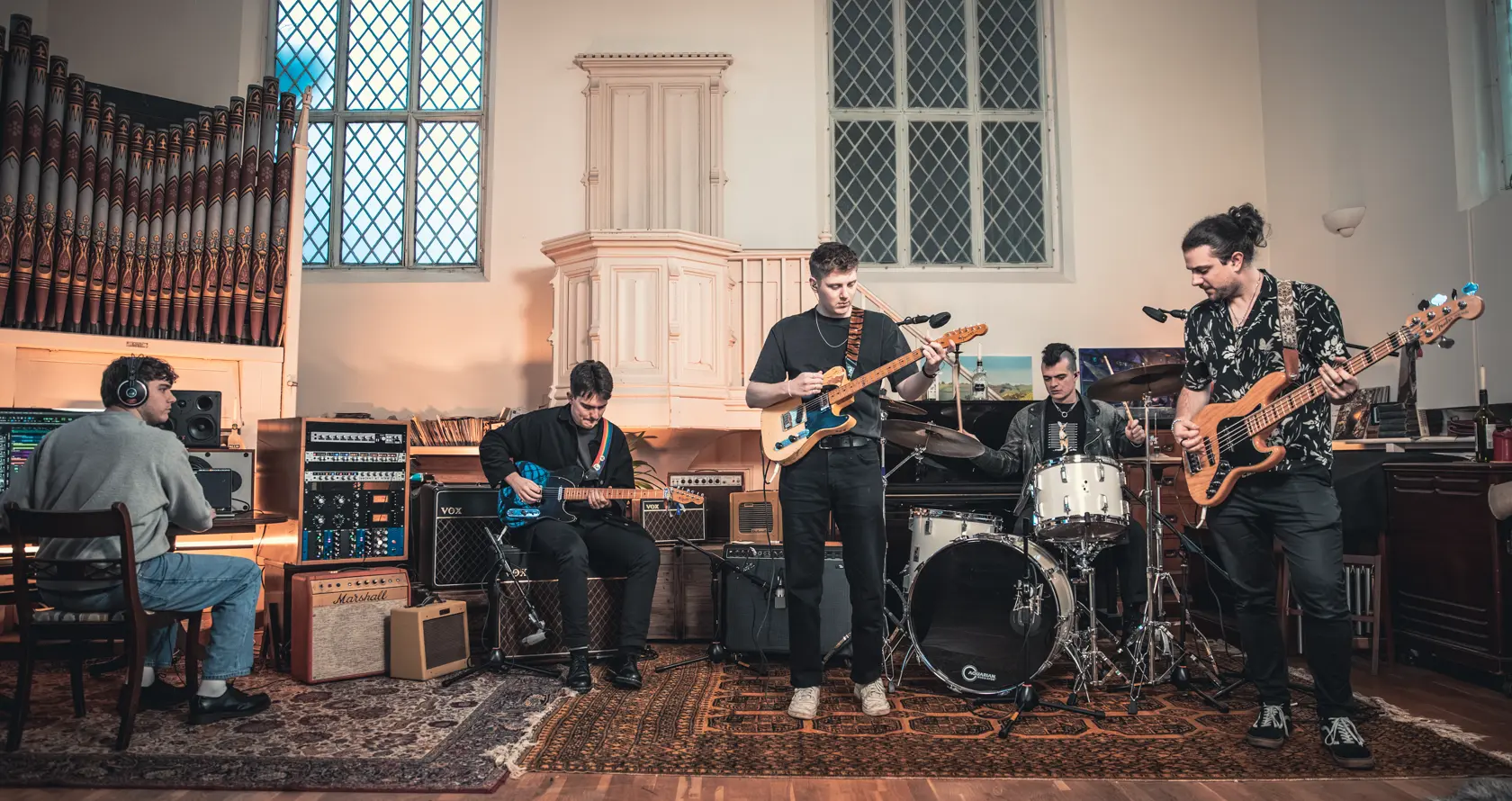Dealing With Spill
Dealing With Spill
In July of last year we recorded a promotional video for iD44, our newest audio interface at the time, with the brilliant singer-songwriter Luke Sital-Singh performing his song ‘Time Is A Riddle’ on piano whilst singing.
We needed to consider the different ways they could go about recording Luke on location to get the best sound possible. At the time we agreed that using the smallest amount of mics available was best in order to avoid any phasing issues. We ended up using all 4 channels on the iD44, with 2 mics on the piano, 1 mic for vocals and 1 mic as room mic.

Isolating different instruments is a great way to make sure you have ultimate control over the different sound sources at the mix stage. However, when recording someone playing and singing at the same time, you will often find that when recording their instrument and voice separately, the performance could suffer.
What is the point in lovely isolated tracks, if the performance and passion of the song is not there? You may have to record them at the same time, and work out how to minimise spill between mics.
Polar Patterns
Polar Patterns
The polar patterns of microphones are a great way to control spill between sources. This involves positioning them so the sensitive areas are pointed towards the source you want to hear and the null points are pointing towards the source you don’t want to hear.

In the case of recording Luke, we made use of the AT4050’s cardioid pattern, pointing the null on the rear of the mic towards the piano strings. The piano mics were also cardioid and pointing directly into the piano, so the null was not pointing towards Luke’s mouth. Figure-8 mics would have been the best solution, however, in this situation, the piano was much louder than his voice, so the spill into the piano mics was not an issue.

Acoustic treatment
Acoustic Treatment
You can go down various paths to try and physically isolate the instrument from the voice by putting acoustic panels between them. Obviously, this will have different results with different instruments, and might actually cause more issues by distracting the performer.

For recording piano, putting up some sort of acoustic material in front of the singer could help reduce the direct sound from the piano in the vocal mic, whether a reflection filter, or even acoustic panelling.
Dealing With It
Dealing With It
At the end of the day, spill doesn’t necessarily have to be your enemy, so long as you have done what you can to reduce it. For acoustic music with a voice and single instrument, it may not be hugely important to have the control you would get from isolating instruments.
Ensuring you have a high quality audio interface such as the Audient iD44, decent microphones, and good mic positioning, the track may only need a light touch in the mix, so having complete separation is not necessary at all.
You can watch the final result here:
Our Products
-

2输入 | 2输出 音频接口
-

10输入 | 6输出 音频接口
-

6输入 | 4输出 音频接口
-

14输入 | 8输出 音频接口
-

10输入 | 14输出 音频接口
-

20输入 | 24输出 音频接口
-

24输入 | 32输出 音频接口
-

10输入 | 14输出 音频接口
-

10输入 | 4输出 音频接口
-

2输入 | 2输出 音频接口
-

4输入 | 4输出 音频接口
-

24输入 | 24输出 音频接口
-

开始录音所需的一切
-

8 通道智能前置放大器带 AD/DA
-

具有ADC的8通道麦克风前置放大器
-

具有 HMX 和 IRON 的 8 通道麦克风前置放大器
-

大型录音控制台
-

小型模拟录音控制台
-

小型模拟录音控制台
-

沉浸式音频接口与监听控制器
-

桌面监听控制器
-

环绕声控制器



